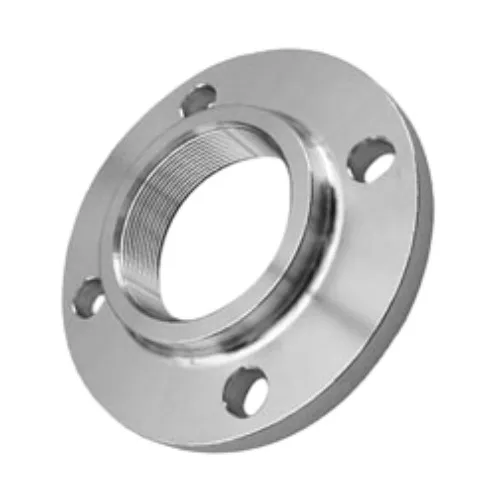-
Cangzhou Yulong Steel Co., Ltd.
-
Phone:
+86 13303177267 -
Email:
admin@ylsteelfittings.com
- English
- Arabic
- Italian
- Spanish
- Portuguese
- German
- kazakh
- Persian
- Greek
- French
- Russian
- Polish
- Thai
- Indonesian
- Vietnamese
- Zulu
- Korean
- Uzbek
- Hindi
- Serbian
- Malay
- Ukrainian
- Gujarati
- Haitian Creole
- hausa
- hawaiian
- Hebrew
- Miao
- Hungarian
- Icelandic
- igbo
- irish
- Japanese
- Javanese
- Kannada
- Khmer
- Rwandese
- Afrikaans
- Albanian
- Amharic
- Armenian
- Azerbaijani
- Basque
- Belarusian
- Bengali
- Bosnian
- Bulgarian
- Catalan
- Cebuano
- China
- China (Taiwan)
- Corsican
- Croatian
- Czech
- Danish
- Esperanto
- Estonian
- Finnish
- Frisian
- Galician
- Georgian
- Kurdish
- Kyrgyz
- Lao
- Latin
- Latvian
- Lithuanian
- Luxembourgish
- Macedonian
- Malgashi
- Malayalam
- Maltese
- Maori
- Marathi
- Mongolian
- Myanmar
- Nepali
- Norwegian
- Norwegian
- Occitan
- Pashto
- Dutch
- Punjabi
- Romanian
- Samoan
- Scottish Gaelic
- Sesotho
- Shona
- Sindhi
- Sinhala
- Slovak
- Slovenian
- Somali
- Sundanese
- Swahili
- Swedish
- Tagalog
- Tajik
- Tamil
- Tatar
- Telugu
- Turkish
- Turkmen
- Urdu
- Uighur
- Welsh
- Bantu
- Yiddish
- Yoruba

Dec . 14, 2024 13:26 Back to list
Overview of ASTM A106 Gr B Steel Specifications and Applications for Industrial Use
Understanding ASTM A106 Grade B Specification
ASTM A106 Grade B is a specification established by ASTM International, which outlines the requirements for seamless carbon steel pipes intended for high-temperature service. This standard is crucial for the oil and gas industry, as well as for power generation and chemical processing applications, where high strength and corrosion resistance are paramount.
Overview of ASTM A106
ASTM A106 was first introduced in 1928 and has undergone various revisions to improve its applicability and performance. The standard covers seamless carbon steel pipe for high-temperature service in applications that require an elevated temperature for extended periods. The pipes manufactured under this specification are designed to perform in environments where both pressure and temperature can lead to potential failures, thus demanding reliable materials.
Chemical Composition
The chemical composition of ASTM A106 Grade B is critical to its performance. The specification primarily covers three grades Grade A, Grade B, and Grade C, with Grade B being the most commonly used. The material's chemical composition typically includes carbon, manganese, phosphorus, sulfur, and silicon, with specific limits set for each element. For Grade B, the maximum carbon content is 0.30%, which ensures that the pipe maintains good weldability and toughness.
The enhanced mechanical properties of Grade B are attributed to its strict composition requirements. The material is designed to withstand both high pressure and elevated temperatures, making it ideal for applications like steam pipelines, processing plants, and various manufacturing operations.
Mechanical Properties
One of the salient features of ASTM A106 Grade B is its impressive mechanical properties. The standard specifies that the pipe must meet specified yield strength and tensile strength values. For Grade B, the minimum yield strength is 35,000 psi (241 MPa), and the minimum tensile strength is 60,000 psi (414 MPa). These mechanical properties are crucial, particularly in high-pressure environments where the integrity and reliability of the pipeline are essential.
astm a 106 gr b specification

In addition to yield and tensile strength, the standard specifies other mechanical tests, including elongation requirements and flattening tests. These evaluations ensure that the pipe can withstand mechanical stresses and maintain its shape under pressure without deforming or breaking.
Applications
ASTM A106 Grade B pipes are widely used in various applications where high temperatures and pressures are prevalent. Common uses include
1. Oil and Gas Industry For transporting oil, gas, and other fluids at elevated temperatures. 2. Chemical Processing In equipment and piping systems that require high strength and corrosion resistance. 3. Power Generation For steam service in power plants, facilitating the transfer of steam at high pressures. 4. Boiler Systems Used in the construction of boilers and heat exchangers where durability is crucial.
Fabrication and Welding
Fabrication of ASTM A106 Grade B pipes usually involves processes where high-strength welding is required. The material's lower carbon content allows for easier welding processes, making it adaptable for various applications. Weldability is an essential factor in pipeline construction, and adhering to the ASTM specifications ensures that the welded sections can withstand operating conditions without compromising integrity.
Conclusion
ASTM A106 Grade B specification is an essential guideline for manufacturers, engineers, and construction professionals working with seamless carbon steel pipes. Its detailed requirements regarding chemical composition, mechanical properties, and applications ensure that the pipes are suitable for high-temperature and high-pressure environments. Understanding and adhering to this specification is crucial to ensuring the safety and efficiency of piping systems across various industries. Whether in the oil and gas sector, chemical processing, or power generation, ASTM A106 Grade B remains a reliable choice for engineers and fabricators striving for quality and performance. As industries evolve, the continued adherence to ASTM standards like A106 will play a significant role in ensuring operational reliability and safety in critical applications.
Latest news
-
ANSI 150P SS304 SO FLANGE
NewsFeb.14,2025
-
ASTM A333GR6 STEEL PIPE
NewsJan.20,2025
-
ANSI B16.5 WELDING NECK FLANGE
NewsJan.15,2026
-
ANSI B16.5 SLIP-ON FLANGE
NewsApr.19,2024
-
SABS 1123 FLANGE
NewsJan.15,2025
-
DIN86044 PLATE FLANGE
NewsApr.19,2024
-
DIN2527 BLIND FLANGE
NewsApr.12,2024
-
JIS B2311 Butt-Welding Fittings LR/SR 45°/90° /180°Seamless/Weld
NewsApr.23,2024











